I will not deny it – I am becoming more and more fan of VUCA Simulation games. They pick up very interesting titles – sometimes fresh designs, sometimes new editions of classics – and put them into incredibly beautiful and appealing graphical form. At the same time, making sure that the rules are explained clearly and straightforwardly. So with even great pleasure I will share my First Impression on one of their newest titles. Enjoy!
The game
What do I have today in plan? Traces of War! This is a two-player game that simulates the intense fighting between Axis and Soviet forces after the battle of Kursk during August 1943 to March 1944. A major Soviet offensive is launched against a German mobile defense which almost results in similar debacle like at Stalingrad – only prevented by Erich von Manstein defying a Hitler’s direct order not to break through.
The game uses well-known chit pull mechanisms, with some twists and changing composition depending on the turn. The move and battle rules are pretty straightforward, while the supply – while existing – is not overly complex. Reinforcements can be brought in a flexible way, making each game different. What’s more, we are getting two scenarios which have pretty distinct winning conditions, thus making for quite a different experience (and strategies).
Historical background
I think it would be interesting for Dear Readers to learn a bit about the historical background of the game. We are at Ostfront, between July 1943 and March 1944. Immediately following the Battle of Kursk, the Soviet began an offensive against German Army Group South. The superior Soviet armament potential, with 8,400 Soviet tanks to 2,300 German tanks, and the reservoir of reserves were of decisive importance.
At the end of August, the Wehrmacht had to abandon Kharkov. In a rush, the Soviets threw the Germans back some 250 kilometers to the west in the southern section of the Eastern Front by November. On November 6, they liberated Kiev, the Ukrainian capital, which had been occupied by German troops since September1941.
In early January 1944, the Soviets crossed the old Polish inter-war border in Volhynia to Kowel and Luzk. On February 11, they captured the transportation hub of Shepetovka west of Kiev. South of the Pripjet Marshes, they thus drove a wedge over 300 kilometers long between German Army Groups South and Center. By an encircling movement southward toward Vinnitsaand Uman, the Red Army on January 28, 1943, trapped two German army corps standing near Cherkassy. What followed was arguably the largest breakout operation of World War II, a “wandering pocket.” Similar to Stalingrad, some 220,000 men were trapped. But Manstein, through a surprising maneuver, managed to rescue almost all of them from the encirclement and break out to the west.
After Manstein’s tactical withdrawal of German units on the lower Dnipro front arc, which were also threatened with encirclement, there were once again heated arguments with Hitler over operational strategy. On March 30, 1944, while the Soviet spring offensive was still underway, Adolf Hitler dismissed the popular German army commander Erich von Manstein, for “lack of staying power”. The army days of general were finished…
Set-up
Time to play and present to the Dear Readers the sessions I had pleasure to be part of. Below the initial situation on the map; I will be playing the shorter, Race To The Dnipro (4 Turns) scenario. I brought this to the table both in solo and in multiplayer versions – so two reports will follow.


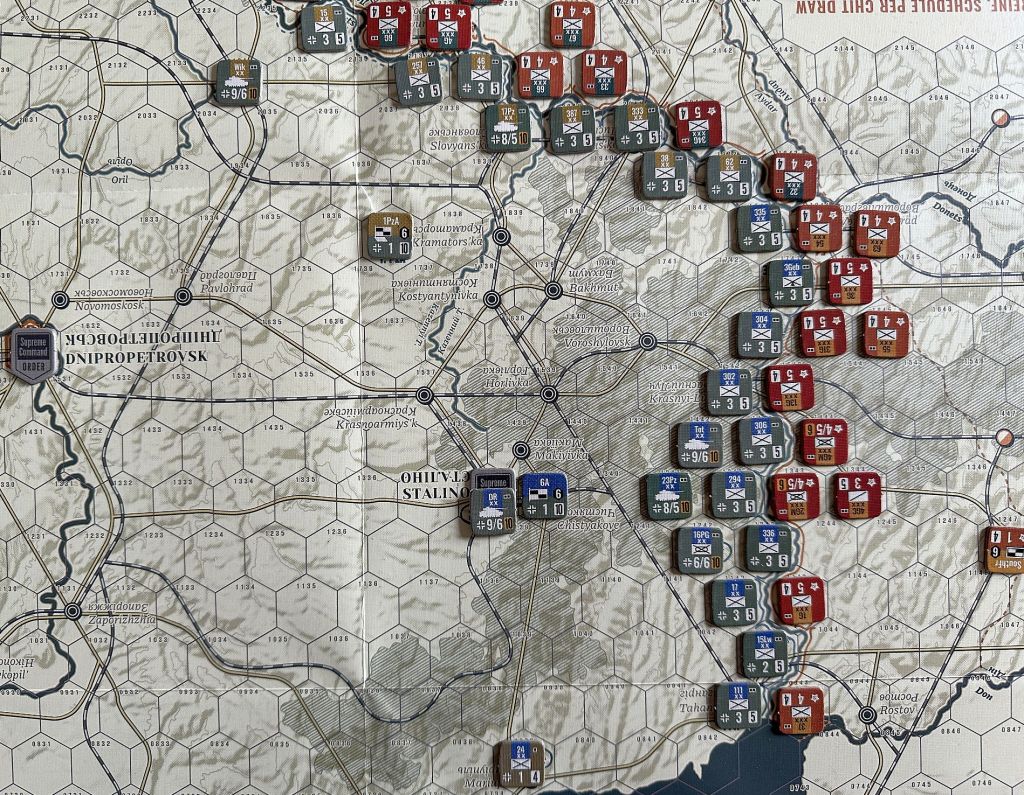

It is important also to understand what the victory conditions are – they are calculated only for Soviets and the result is checked versus the victory threshold (50 VPs or more):
- Each Crossing Point under Soviet control (red border near Dnipro) – 5 VPs
- Each mechanized unit west of the Dnipro able to trace supply – 1 VP
- Each non-mechanized unit west of the Dnipro able to trace supply – 1/2 VP
- Each mechanized unit west of the Dnipro unable to trace supply. – 1/2 VP
- Each non-mechanized unit west of the Dnipro unable to trace supply – 1/4 VP
Would it have been easy for the Soviets to initially break German defenses? Probably yes. And to achieve the assumed victory? That could have been a challenge. Let’s see!
Solitaire Session Report
Picture begin worth a thousand words, let us first see my solo session report which will depict the main actions in shorter scenario. That was really interesting and tough play – learning, even with significant advantage on Soviet side – was not easy!
PS. Feel free to click any of below images to expand them in new window for more details.


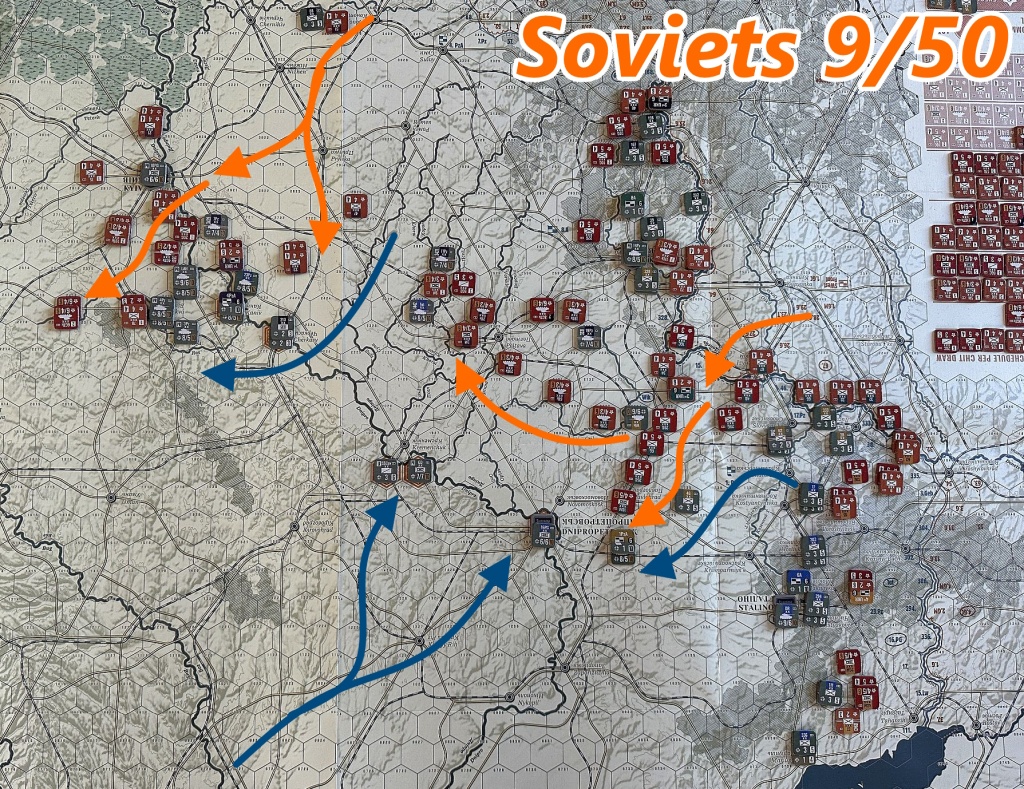
Well, Soviets have huge advantage but Germans are more mobile and are able to bring quickly the reinforcements. It was a tough lesson, learned the hard way and definitely needed for another attempt!
Multiplayer Session Report
This time I played with my long-term wargaming buddy Marcin. Due to the complexity of Soviet command, I was given supervision over Red Army while Marcin was supposed to lead a fighting retreat of Wehrmacht. Let us see how it went.
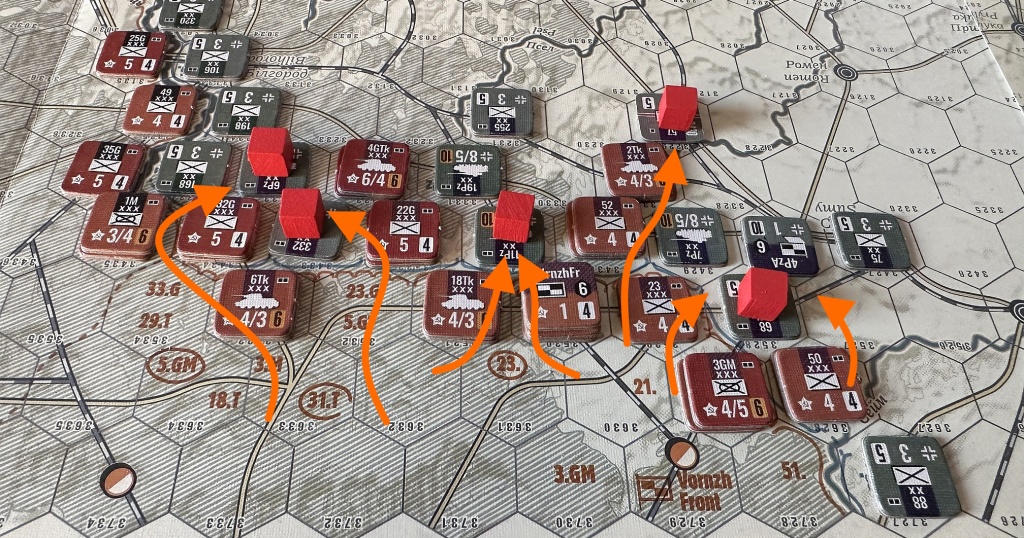


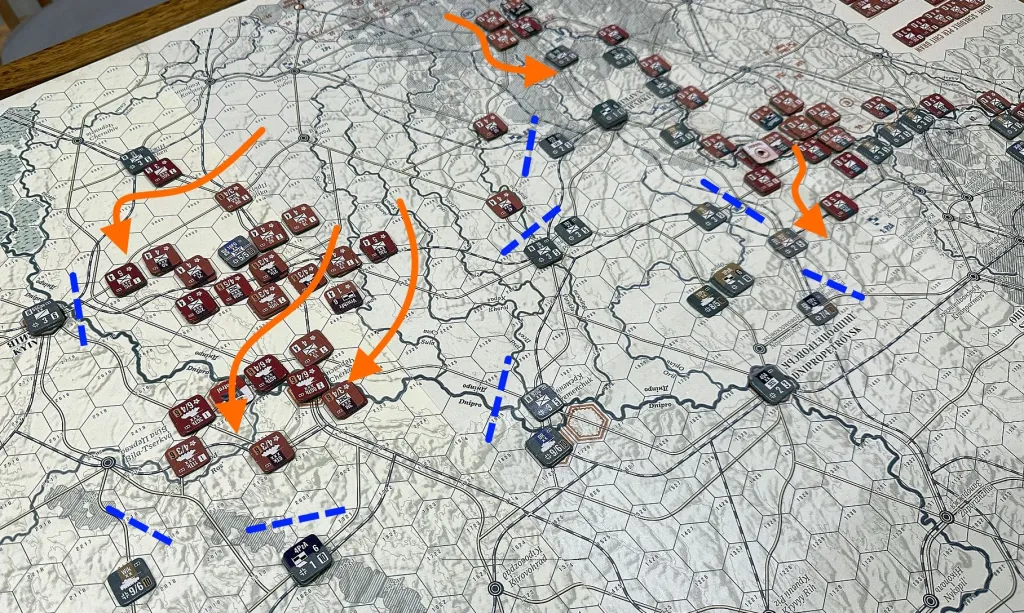
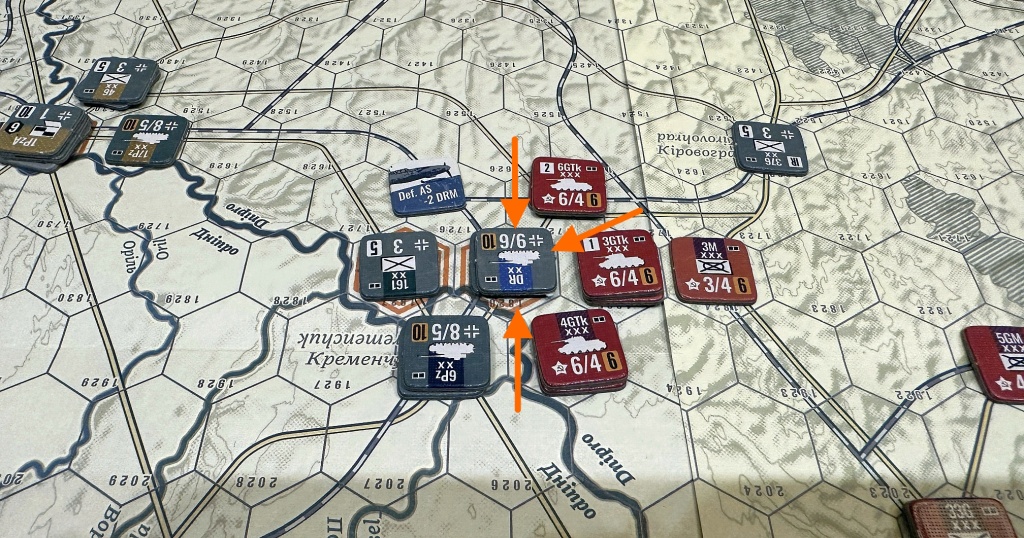

First Impressions
What two great sessions – exciting, bloody and fast! After the two-player game we exchanged impression, comments and observations – they were predominantly very positive. Let us talk about them, adding also what I learned in solo attempt:
- The rulebook is pretty straightforward, rules well explained and at the same time they create wide tactical and strategical choices
- The historical topic is very interesting, probably not so know as Stalingrad or Kursk – good to have a game filling that gap
- The chit-pull mechanism makes this game not so predictable and allows for different narrative each time. At the same time this is enormously solo-friendly title.
- Great to see two scenarios – especially taking into consideration they have pretty distinct victory conditions so play also differently; great way to prolong fun from this position!
- One thing in which VUCA excels is graphical representation of the game and components quality. They are astonishingly beautiful, using very balanced color palette which produces pretty elegant effect.
- Another aspect which one needs to take into consideration is the asymmetry of the game; Soviets are all the time on the attack, Germans on defense. It might not be such a great fun to lead Wehrmacht as Red Army constantly smashes through them (regardless of final result in victory points). That even more makes the game solitaire suitable.
All in all, the game made a pretty positive impression on us and we simply liked it. It was thematic, quick, exciting and beautiful. We for sure will come back to this again!


Very interesting scenario! Looks quite challenging for the Soviets!
LikeLiked by 1 person
It is indeed! Though fun to race to Dnipro!
LikeLiked by 1 person